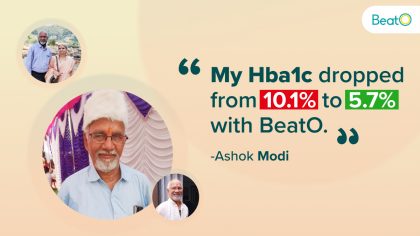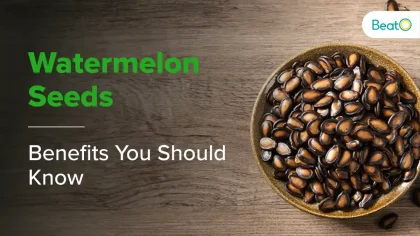Having diabetes doesn’t mean you have to give up on your favourite sweets forever. Yes, it’s true that one must keep track of what they eat when they’re diabetic because mindless eating can quickly raise blood sugar levels. However, once in a while, there is no harm in giving yourself the liberty to relish some diabetic-friendly sweet dishes to satiate your cravings.

In this article, we are going to share some delectable traditional South Indian sweet recipes that diabetics can eat without worrying too much about their sugar levels. All these recipes are entirely sugar-free and contain low-calorie sweeteners to avoid unnecessary spikes in sugar levels.
Also Read:13 Asafotida Benefits and Side Effects
5 Diabetes-Friendly Traditional South Indian Sweet Recipes
Here are some of the popular traditional South Indian sweet that can be made sugar-free by replacing some ingredients.
1. Mysore Pak
You’ll Need:
- Besan – 1 cup
- Stevia powder – 1 cup or as required
- Clarified butter or ghee – 1 cup
- Water – ½ cup
Method:
1. Take one cup of besan in a pan and roast it on a low flame for a few minutes.
2. Pass the roasted besan through a sieve, making sure no lumps remain in the powder. Keep it aside.
3. Now, place two pans on different burners on the gas stove.
4. On one, place a deep pan and add ½ cup water and 1 cup of stevia powder. Stir occasionally to dissolve the powder.
5. On the other burner, melt one cup of clarified butter or ghee in a pan.
6. Next, add roasted besan to the dissolved stevia syrup and mix well to avoid the formation of lumps.
7. Keep adding spoonfuls of ghee to the above mixture intermittently until you have added it all.
8. Cook the mixture for another 5-8 minutes before taking it off the heat.
9. Cover a tray with a thin layer of ghee and line it with parchment paper.
10. Transfer the cooked mixture to the tray and spread it evenly.
11. Keep the tray aside for an hour or two to let the mixture set.
12. Cut small pieces out of the mixture and enjoy the delicious, diabetes-friendly Mysore Pak!
Also Read:Basmati Rice Benefits For Weight Loss: Does It Help?
2. Cherupayar/ Moong Dal Payasam
You’ll Need:
- Yellow moong dal – ½ cup
- Stevia drops – 5–6 drops
- Dates paste – ¼ cup
- Ginger powder – one pinch
- Cardamom powder – one pinch
- Cashews and raisins – 4-5 each
- Coconut oil – 1 tablespoon
- Thin coconut milk – 1/3 cup
- Thick coconut milk – ½ cup
- Water – 2 cups
Method:
1. Turn on the stove and place a deep pan on it. Add one tablespoon of coconut oil to it.
2. Once warm, add cashews and raisins to the oil and fry them until they are slightly golden brown.
3. Take them out of the pan and set them aside for later use.
4. Add moong dal to the remaining oil and fry until fragrant. Add two cups of water and let the dal cook until it turns soft. Mash the softened dal to form a paste-like consistency.
5. To this, stir in a sufficient amount of stevia drops and dates puree.
6. Now, add thin coconut milk to the pan and let the payasam simmer for 7-8 minutes, stirring occasionally.
7. Add the thick coconut milk to the pan and turn off the heat.
8. Sprinkle some dry ginger and cardamom powder before adding the roasted cashews and raisins.
9. Let the payasam stand for a few minutes before serving hot.
3. Sugar-free Sweet Pongal
Pongal is another traditional south Indian sweet that is very popular and here is a recipe to make a sugar free version of it.
You’ll Need:
- Brown rice – 1 cup
- Moong dal – ½ cup
- Milk – ½ cup
- Ghee – 1 tablespoon
- Cardamom powder – ¼ teaspoon
- Cashews – 5-6
- Raisins – 5-6
- Water – 2 cups
- Salt – one pinch
- Sugar-free sweetener of your choice
Method:
1. Heat ghee in a pan and add cashews and raisins to it. Fry them until golden brown before collecting them in a fresh bowl.
2. Now, take a pressure cooker and add washed brown rice, moong dal, two cups of water, and one pinch of salt to it.
3. Close the lid and let it cook for around 10 minutes (3–4 whistles).
4. Turn off the heat and let the cooker release the pressure.
5. Open the lid and add milk, sugar-free sweetener (as per your needs), and cardamom powder.
6. Let the mixture cook for about five minutes.
7. Add roasted cashews and raisins to the pan and mix well.
8. Your diabetic-friendly Pongal is now ready to eat!
Also Read:10 Sugarcane Juice Benefits You Might Not Know About
4. Rava Kesari
You’ll Need:
- Fine rava – ½ cup
- Water – 1.5 cups
- Sugar substitute – as required
- Ghee – 4 tablespoons
- Cashews, almonds, raisins – 4-5 each
- Cardamom powder – ½ teaspoon
- Yellow food colouring – 3–4 drops or a few strands of kesar
Method:
1. Take a pan and dry roast semolina or fine rava for 2–3 minutes. Transfer it to another utensil and leave it to cool.
2. Add ghee to the same pan along with crushed cashews, almonds, and raisins. Toss until they turn fragrant and are light brown in colour. Transfer them to another bowl.
3. To the remaining ghee, add roasted semolina or fine rava and cook for 1-2 minutes.
4. Add water to the pan and mix well so that no lumps are formed.
5. You can now add a sugar substitute of your choice, cardamom powder, roasted dry fruits, and food colouring (or kesar) to the pan and mix well.
6. Let the semolina cook until it absorbs the water and turns soft and mushy.
7. Turn off the flame and let it sit for some time.
8. You can now enjoy your delightfully tasty rava kesari!
Also Read:7 Bajra Pearl Millets Benefits: Good For Heart & Gut Health
5. Broken wheat kheer
Kheer is another traditional South Indian sweet that is very popular and here is a recipe to make a sugar free version of it.
You’ll Need:
- Broken wheat – ½ cup
- Dates paste – 1 tablespoon
- Stevia sweetener – a few drops
- Grated coconut – ¼ cup
- Coconut oil – 1 tablespoon
- Poppy seeds – 1 teaspoon
- Cardamom powder – ¼- ½ teaspoon
- Cashews and almonds – 4-5 each
Method:
1. Take a mixer grinder and, to it, add grated coconut, dates paste, and stevia sweetener as per your taste. Grind it to a paste.
2. Add coconut oil to a pan and heat well. Add broken wheat to the pan and roast it until light brown. Transfer it to a plate and leave it for the time being.
3. Now add the cashews and almonds to the same pan and roast for a few minutes. Take them out in a separate bowl.
4. To the same pan, add the coconut, stevia, and dates mixture and cook it for 7–10 minutes.
5. Add broken wheat along with water and let it cook for another 10 minutes.
6. Next, turn off the flame before adding cardamom powder, poppy seeds, cashews, and almonds to the pan. Use a spoon to mix everything well.
7. Take out some kheer in a fresh bowl and enjoy your traditional South Indian sweet delicacy.
Wrapping Up
Traditional South Indian sweets are known worldwide for their exquisite flavours and mouth-watering taste. It doesn’t matter if you belong to any of the states in South India or not; you are always welcome to devour the sweet delicacies of the region. While most of these preparations are traditionally made from sugar, you can easily replace it with your preferred sweetener if you’re diabetic. By doing so, you can cut down on the calories in the dish and enjoy it to your heart’s content.
Last but not least, talk to your doctor about whether it is okay for you to occasionally have diabetic-friendly sweets. If the answer is yes, feel free to try out the recipes shared above. You will enjoy them, for sure!
Also Read:7 Incredible Bottle Gourd Benefits For Healthier You
Disclaimer: The content of this article is compiled information from generic and public sources. It is in no way a substitute, suggestion, or advice for a qualified medical opinion. Always consult a specialist or your own doctor for more information. BeatoApp does not claim responsibility for this information.
Move ahead from a traditional glucometer, buy a smart glucometer kit from BeatO, and keep track of your blood sugar level wherever you go. Check now.




